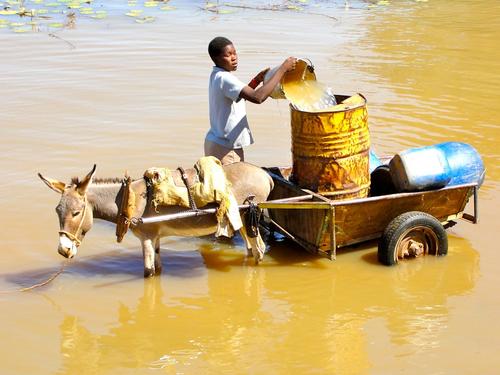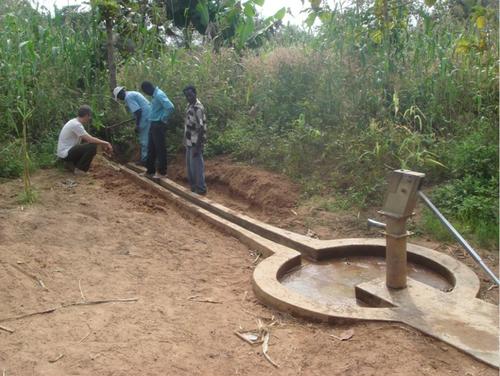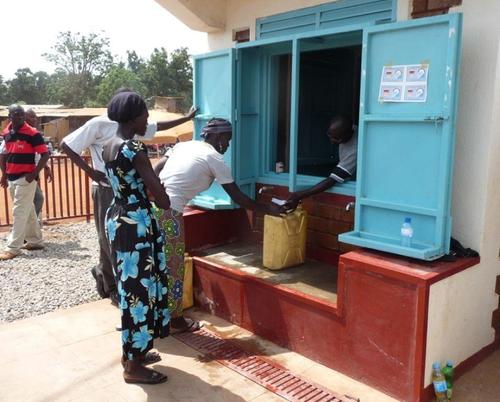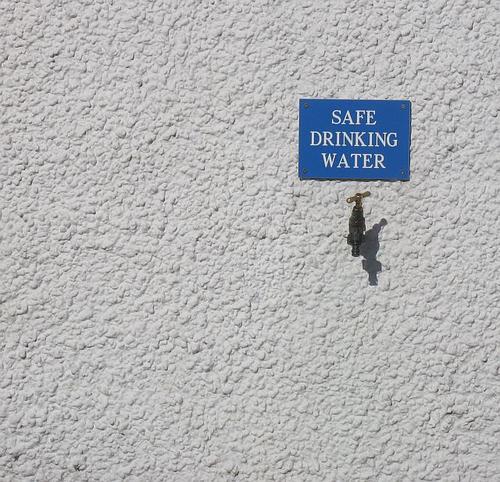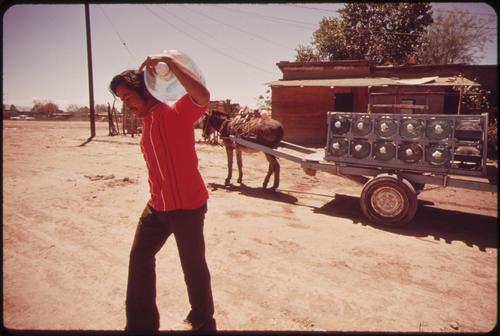How do we get access to water?
Reasonable access to safe drinking water is defined as the availability of at least 20 litres per person per day from an improved source within 1 kilometre of the user's dwelling.
The figure above demonstrates the percentage of countries population who do NOT have access to potable water. It also shows clearly that access to potable water is not related to environmental and climatologic conditions but with other aspects, such as water management structures or peoples way of living; pastoralist cannot – per definitions – have access to potable water, because of their migrations. Wars play an extraordinary role to water management, since infrastructure and governmental structures (regulatory authorities) are often destroyed and dismissed.
Developing countries show a wide variety of water supply systems for its population. The following pictures from the African continent demonstrate several, but not all possibilities of water supply systems.
Accessing surface water in Burkina Faso
Image Credit: Jeff Attaway, 2006 http://commons.wikimedia.org/wiki/File:Flickr_-_Jeff_Attaway_-_Water_Work.jpg
A widespread and common way of fetching water in developing countries is the direct access to surface water (from lakes and rivers). These access places to water as used for several purposes:
- fetching water domestic use
- cleaning of cloth
- personal hygiene
- washing cars, bikes, etc.
- watering livestock
Water pollution takes place exact where people fetch drinking water!
More advances are the access to water from shallow wells and or boreholes. The shallow wells are often protected through fences, but the areas are seldom paved and thus, access is often through muddy ground. Shallow boreholes are usually paved nearby as protection of the borehole and access to the water is more hygienically.
However, good water quality is not only question of deliverance from the kiosk, but of clean and hygienic containers to carry the water home. It is quite common that these containers (“jerry cane”) are highly polluted and due to this fact, awareness creation measures go parallel to operating water kiosks.
Tapped water
Image Credit: Richard Webb commons.wikimedia.org/wiki/File:Safe_drinking_water_-_geograph.org.uk_-_774779.jpg
In urban areas public taps are more and more common. These public tabs provide high water quality and quantity for “on the spot” needs of the population. Public tabs are not meant for general domestic purposes but served especially for urban poor are secure source for potable water. A positive side effect is the reduce utilisation of disposable bottles – a contribution to protection of the environment.
Water from bottles
Image Credit: Charles O'Rear, Environmental Protection Agency, 1972–1977 http://research.archives.gov/description/549093
Water bottles for dispensers are very common in South-East Asia. They guarantee high water quality by affordable price. A negative side effect of water bottles, especially of the non-returnable is the widespread environmental pollution from plastic.


